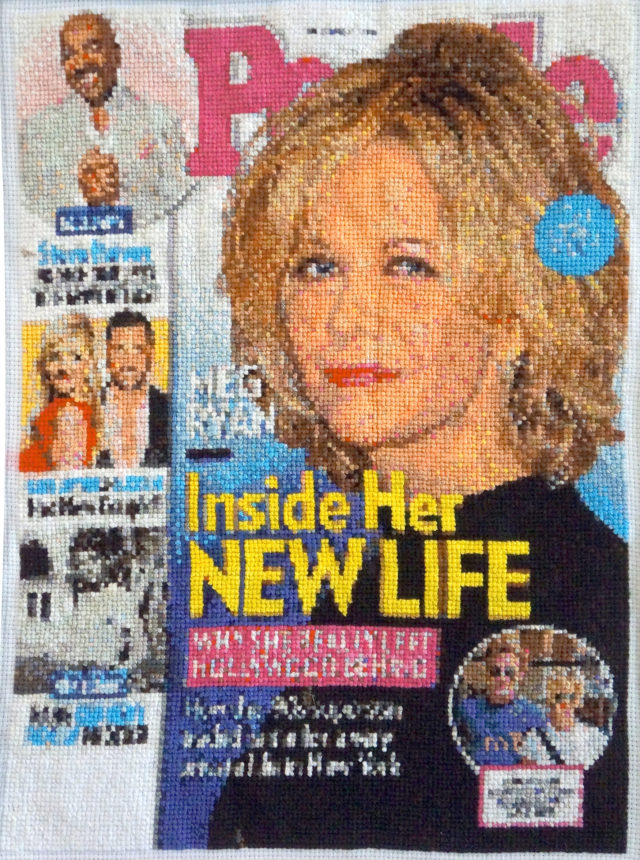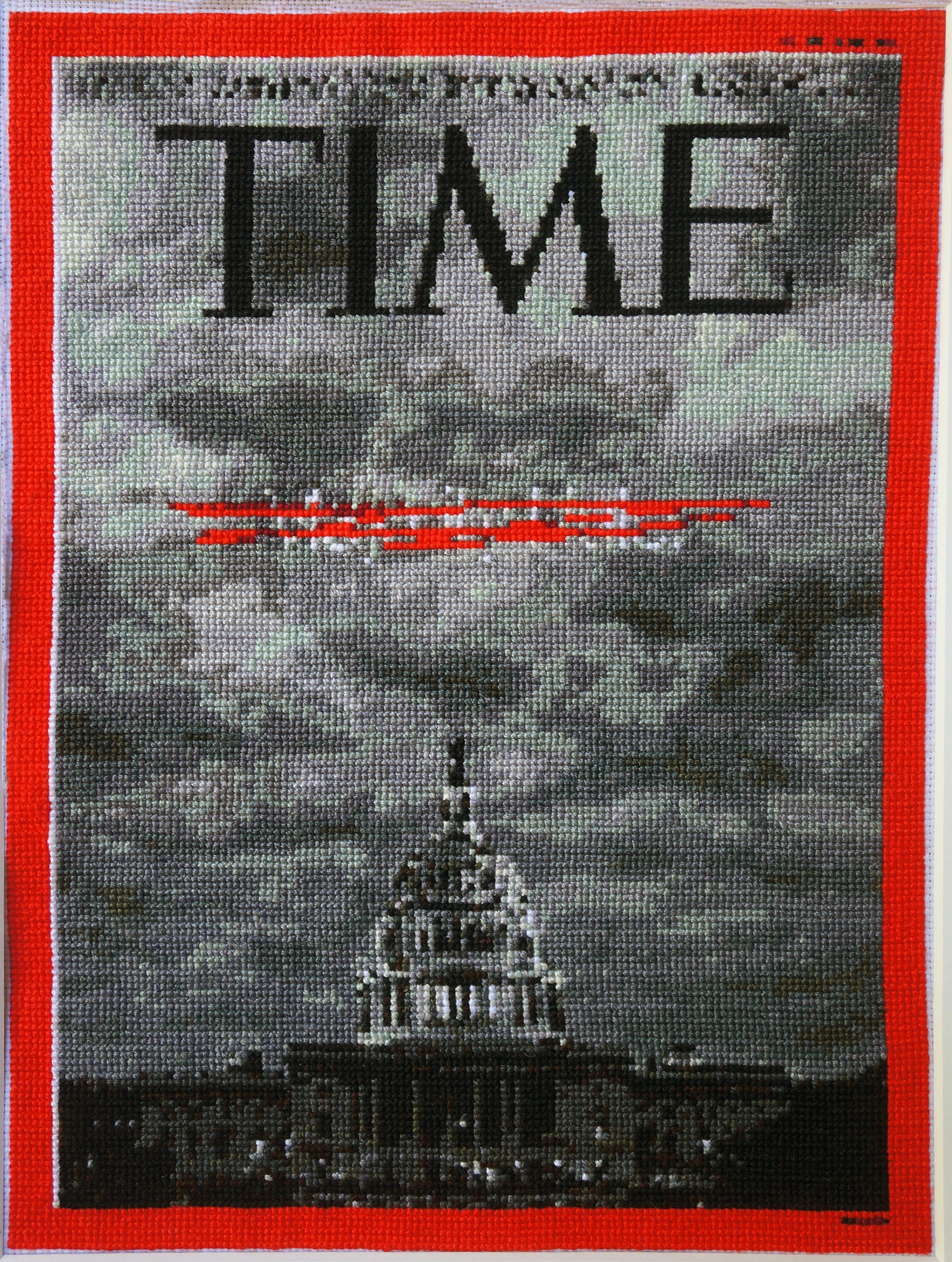
The week of Feb. 11, 2013, Time Magazine looked at the impact caused by the rising number of drones, while People Magazine ran a cover story about the love life of American Idol winner Kelly Clarkson. Each publication stayed on the newsstand for seven days, highlighting the widespread interests of the country: everything from warfare to love affairs. While those covers are long forgotten by most five years later, they are forever preserved in artist Jennifer Drinkwater’s series 168 Hours.
In her work, Drinkwater uses embroidery to re-create life-size versions of two of America’s most popular magazines. She juxtaposes two covers from the same week such as from April 22, 2013, when Time analyzed manufacturing jobs in the U.S. and People looked at royal baby fever; or from Oct. 14 when Time tackled the lack of majority rule and People covered Meg Ryan. Pairing the two together, Drinkwater leaves it to the viewer to draw their own conclusions.
The title of the series serves as a double entendre: a one-week news cycle amounts to 168 hours, and that’s also the amount of time it takes for Drinkwater to complete one cover.
“It’s super, super long and super, super short at the same time,” she says. “A curator once said that it was like I was carefully preserving all this disposable information.”
Drinkwater first conceived of the work with a desire to utilize her cross-stitching skills, which her grandmothers taught her at a young age. Then at a bookstore, Drinkwater was drawn to the spectacle presented on magazine covers.
“The rhetoric in our country is so horrible. Every cover we see on the newsstand is heightened to elicit a purchase response. ‘The end of the world is happening,’ or, ‘Everything is terrible,’” she says. “Then you look at the People side of it, and it’s this sort of high-intensity personal situations, and they’re so dramatic too. But they both leave the newsstand seven days later and are replaced by a story that’s equally dramatic.

“So I began stitching through it,” she continues. “Breaking down that image gave me a bit of distance from it. … We’re supposed to buy these things; it’s supposed to trigger a sense of impending doom or heightened drama in order for you to want to read more about it. It’s like clickbait but on the newsstand.”
Drinkwater’s art begs the question of the lasting impact of the weekly news cycle — what gets preserved? There are common themes thread throughout the work from both magazines: family, love, war, international relations and more. Even the small sample size of 14 covers in 168 Hours serves as an archive of what is significant in society at a particular point in time.
Along with assessing social values, Drinkwater’s work also begins to unravel the façade being presented. Sitting with the covers for so long, Drinkwater began to notice the not-so-subtle manipulation tactics each cover can have with its language, color scheme, subject matter, lack of diversity and the way certain people in society are cast in certain roles.
“Everything seems really seamless on these magazine covers because they’re airbrushed and Photoshopped, but when you break it down into stitches you see that they’re all elaborate constructions,” she says. “It takes the charade out of it.”
Drinkwater is continuing to add to the series of 2013 covers. She’s currently creating a set from late July of that year — one cover that features Trayvon Martin’s hoodie and the other featuring the fatal overdose of Glee star Cory Monteith.
“People Magazine celebrates this white guy’s life, and with Trayvon Martin’s life all you see is his fucking sweatshirt,” she says. “And they were released on the same day. This is what we value in this country.”
Even though Drinkwater’s first purpose is to create art, making these pieces coincidentally helps her cope with the constantly revolving, constantly aggravating news cycle.
“I have a propensity, maybe not for anxiety, but for falling into that cynical doomsday, ‘The world’s coming to an end,’ mentality. There’s something about having to sit with these images and work through them which makes it a calming process,” she says. “I’m working through the negativity and the clickbait of it by preserving it. It almost reverses that anxiety of seeing something flash.
“The stitching has become more of a respite,” she continues. “It’s a weird meditation of, ‘Fuck this shit,’ with each stitch. You stab through it and move through it over and over.”
And if there’s one upside of handling media from five years ago, it’s that it was before the era of Trump, she says. “So it’s great that I don’t have to do any cross-stitching of his face.”
On the Bill: Making Headlines featuring Jennifer Drinkwater, Joel Swanson and Mario Zoots. Firehouse Arts Center, 667 Fourth Ave., Longmont, Through Dec. 8.














